
The Lakota are a Native American tribe. Also known as the Teton Sioux, they are one of the three prominent subcultures of the Sioux people. Their current lands are in North and South Dakota. They speak Lakȟótiyapi—the Lakota language, the westernmost of three closely related languages that belong to the Siouan language family.

Bear Butte is a geological laccolith feature located near Sturgis, South Dakota, United States, that was established as a State Park in 1961. An important landmark and religious site for the Plains Indians tribes long before Europeans reached South Dakota, Bear Butte is called Matȟó Pahá, or Bear Mountain, by the Lakota, or Sioux. To the Cheyenne, it is known as Noahȧ-vose or Náhkȯhe-vose, and is the place where Ma'heo'o imparted to Sweet Medicine, a Cheyenne prophet, the knowledge from which the Cheyenne derive their religious, political, social, and economic customs.

The Great Sioux Reservation initially set aside land west of the Missouri River in South Dakota and Nebraska for the use of the Lakota Sioux, who had dominated this territory. The reservation was established in the Fort Laramie Treaty of 1868. It included all of present-day western South Dakota and modern Boyd County, Nebraska. This area was established by the United States as a reservation for the Teton Sioux, also known as the Lakota: the seven western bands of the "Seven Council Fires".

The Rosebud Indian Reservation (RIR) is an Indian reservation in South Dakota, United States. It is the home of the federally recognized Sicangu Oyate – also known as Sicangu Lakota, and the Rosebud Sioux Tribe (RST), a branch of the Lakota people. The Lakota name Sicangu Oyate translates into English as "Burnt Thigh Nation"; the French term "Brulé Sioux" is also used.
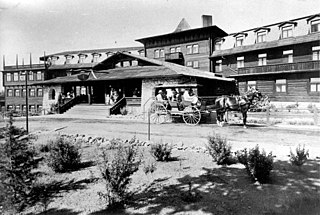
The El Tovar Hotel, also known simply as El Tovar, is a former Harvey House hotel situated directly on the south rim of the Grand Canyon in Arizona, United States.
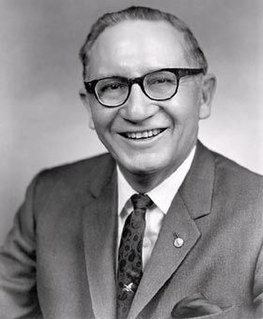
Benjamin Reifel, also known as Lone Feather was a Lakota Sioux public administrator and politician. He had a career with the Bureau of Indian Affairs, retiring as area administrator. He ran for the US Congress from the East River region of South Dakota, and was elected as the first Lakota to serve in the House of Representatives. He served five terms as a Republican United States Congressman from the First District.
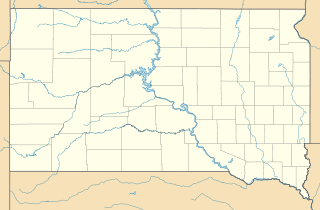
Holy Fellowship Episcopal Church is an historic Carpenter Gothic Episcopal church built in 1886 near Greenwood on the Yankton Indian Reservation in Charles Mix County, in the U.S. state of South Dakota. In 1975 it was added to the National Register of Historic Places.

Dr. Susan LaFlesche Picotte Memorial Hospital, also known as Walthill Hospital or Dr. Susan Picotte Memorial Hospital, is a former hospital building at 505 Matthewson Street in Walthill, Nebraska, on the Omaha Indian Reservation. The hospital was developed by Dr. Susan LaFlesche Picotte (1865–1915), the first female Native American medical doctor. Built with money raised by Picotte from various sources, it was the first hospital for any Indian reservation not funded by government money. It served the community as a hospital until the 1940s, and has had a variety of other uses since. It was declared a National Historic Landmark in 1993.
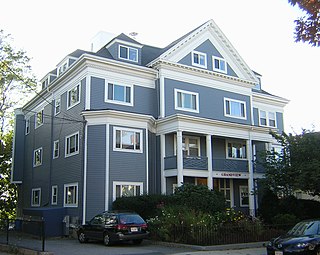
The Grandview is a historic apartment hotel at 82 Munroe Street in Somerville, Massachusetts. This type of building was not uncommon in the city at the time of its 1896 construction. This building affords commanding views of the Boston area from its site near the top of Prospect Hill, and has well-preserved Colonial Revival styling. The building was listed on the National Register of Historic Places in 1989.

The Metropolitan District Commission Pumping House is a historic water pumping station, adjacent to Spot Pond in the Middlesex Fells Reservation, on Woodland Road in Stoneham, Massachusetts. Built in 1901 by the Metropolitan District Commission (MDC), it is one of Stoneham's finest examples of Renaissance Revival architecture. The building was listed on the National Register of Historic Places in 1984, and included in the Middlesex Fells Reservoirs Historic District in 1990.

The H. M. Warren School is a historic school building at 30 Converse Street in Wakefield, Massachusetts. Built c. 1895–1897, it is locally significant as a fine example of Renaissance Revival architecture, and for its role in the town's educational system. The building was listed on the National Register of Historic Places in 1989. It now houses social service agencies.
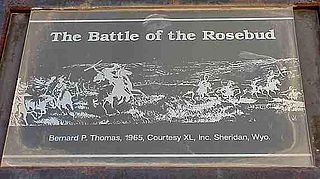
Rosebud Battlefield State Park in Big Horn County, Montana preserves a large portion of the battlefield of the Battle of the Rosebud, fought on June 17, 1876. The battle is known by various other names such as The Battle Where the Girl Saved Her Brother by the Northern Cheyenne, and Crook's Fight on the Rosebud. A National Historic Landmark, the park is a day use facility offering hiking, hunting, picnicking and wildlife viewing. It is located 11 miles (18 km) south of Kirby, Montana on Montana Highway 314.

The Federal Building and U.S. Courthouse, also known as U.S. Courthouse, Sioux Falls, is a historic federal office and courthouse building located at Sioux Falls in Minnehaha County, South Dakota. The building is still in use as a federal courthouse, being the seat of the United States District Court for the District of South Dakota. The structure is listed on the National Register of Historic Places.

The Stafford Village Four Corners Historic District is located at the junction of New York state routes 5 and 237 in Stafford, New York, United States. It is a collection of six buildings of various types from the 19th century, one of which is the oldest house in Genesee County.

St. Francis Mission is a Roman Catholic mission complex on the Rosebud Indian Reservation in St. Francis, South Dakota, in territory of the Lakota (Sioux) Native Americans. The mission was founded in 1886 by priests of the Society of Jesus (Jesuits), who were welcomed by Bishop Martin Marty of the Diocese of Saint Cloud, Minnesota, which extended to this territory at the time. The Jesuit order soon developed a large complex to serve the Lakota at this reservation. Most of the buildings were destroyed by a fire in 1916, but many were soon rebuilt.

The gravesite of the Brulé Lakota chief Spotted Tail stands outside an Episcopal cemetery on the outskirts of Rosebud, South Dakota, the government center of the Rosebud Indian Reservation. It is marked by a stone obelisk which is engraved "Spotted Tail", Chief of the Sioux. The plot is surrounded by a wrought iron fence. It is significant as the only site associated with Spotted Tail's life. Spotted Tail was chosen to lead the Brulé when they were first confined to the reservation, and was an influential figure in the tribal politics of the 1870s. His gravesite was listed on the National Register of Historic Places in 1980.

The Klondike Hotel, also known as the Park Hotel, is a historic building located in Manilla, Iowa, United States. The economic fortunes of Manilla rose and fell with the Chicago, Milwaukee, St. Paul and Pacific Railroad. The two-story, frame, Italianate style hotel was built by H.J. Kopak in 1897. F.M. Offineer was its first owner. The building features a hipped roof, bracketed eaves, and a full-length front porch. It was built a block away from the Milwaukee depot. It served both passengers and crews from trains that had an overnight layover in Manilla. In the early 20th-century Manilla became the junction on the Milwaukee's mainline across Iowa where trains continued on to Omaha or on to the Pacific extension through South Dakota and across the American West. The hotel's name was changed to the Park Hotel in 1903, and an addition was built onto the rear of the hotel in 1905. It went through a succession of owners, and its financial success was dependent on the business brought to it by the railroad. The hotel was listed on the National Register of Historic Places in 1996.
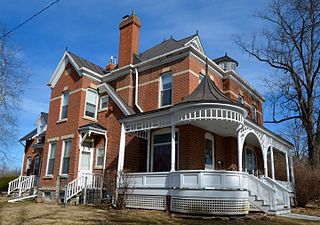
The Vogt House, also known as the Vogt-Unash House, is a historic building located in Iowa City, Iowa, United States. The two-story, brick structure is a fine example of vernacular Queen Anne architecture. It follows an asymmetrical plan and features a high-pitched hipped roof, a gabled and a round dormer on the south elevation, a two-story gabled-roof pavilion on the east, a two-story polygonal bay with a hipped roof on the west, and a single-story addition on the back. Of particular merit is the wrap-around, latticework porch that has a round pavilion with a conical roof and finial on its southwest corner. There are also two outbuildings: a two-story frame carriage house to the west of the house, and a woodshed to the north of the main house.

The Utica Fire and City Hall in Utica, South Dakota was built around 1915. It was listed on the National Register of Historic Places in 1980.

The Thomas Ashcroft Ranch, in Harding County, South Dakota near Buffalo was listed on the National Register of Historic Places in 1987.





















